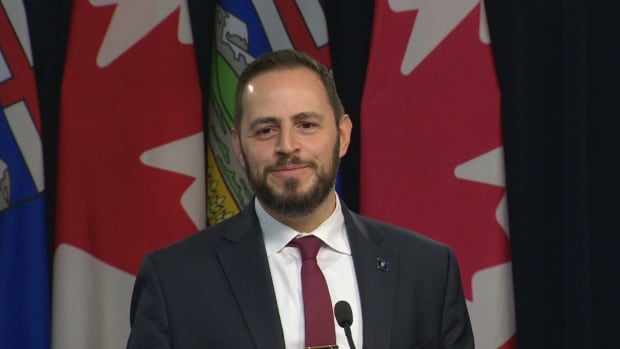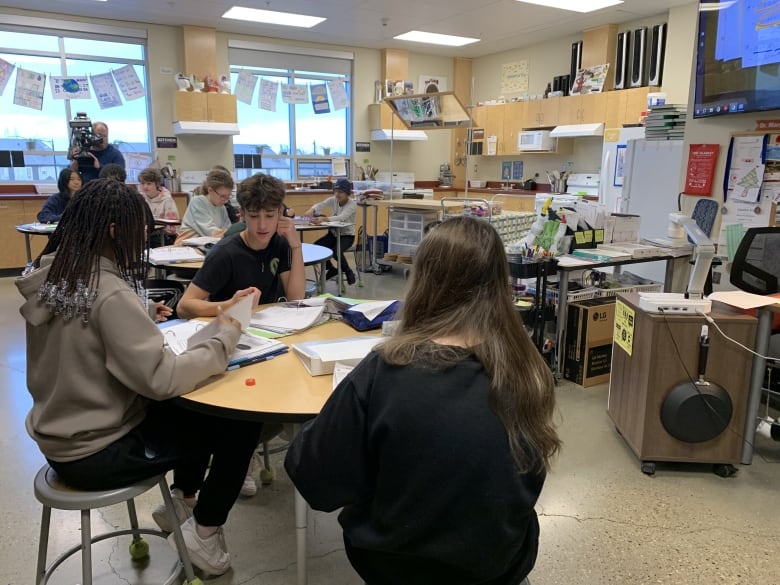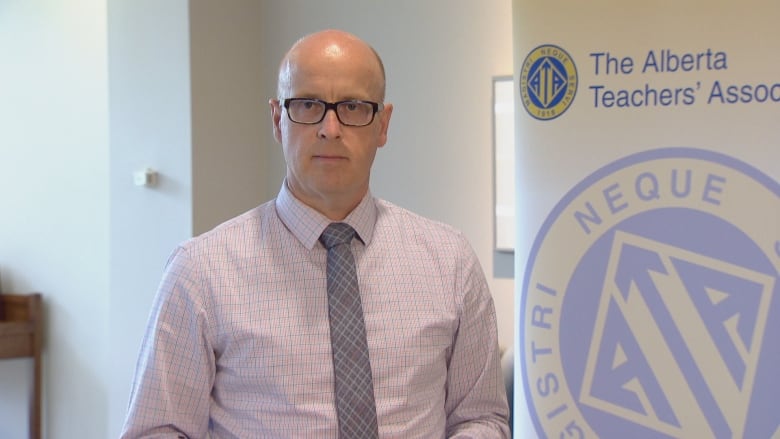
Alberta’s government will build up to 30 new public schools, modernize five older schools and fund five charter school construction projects annually for three years, starting next year, cabinet ministers say.
Education Minister Demetrios Nicolaides was among the ministers who announced more details Wednesday of an $8.6-billion initiative to try to relieve pressure on the province’s jammed school buildings.
“I am confident this will keep up with the province’s historic student enrolment growth by building and modernizing schools where they are needed most,” Nicolaides said at the Calgary event.
The government promised three years of funding, beginning in the 2025-26 budget year, to increase student spaces in public, Catholic, francophone, charter and private schools.
Also, after years of defending a school operational funding formula the United Conservative Party government created in 2020, Premier Danielle Smith said her government is reviewing whether it works in an era of dramatic enrolment growth.
“The funding model was working for us when we had declining enrolment,” Smith said Wednesday. “It’s to protect school boards [so] that they don’t end up with a dramatic reduction. With this huge surge, it’s not as responsive as we need it to be for enrolment growth.”
Smith said the province’s treasury board is “working on an alternative model” and will have more information about school funding in the February 2025 budget.
Rapidly growing school boards have called the model “broken,” and say it leaves them educating thousands of unfunded new students every year. The average amount of public funding available per Alberta student has declined during the last decade.
School boards warning of space crunch for years
Urban and suburban school boards have warned for years that the pace of new school construction in the province is not keeping up with the speed of enrolment growth.
Provincial data shows that the number of pre-kindergarten to Grade 12 students increased by nearly nine per cent between September 2019 and September 2023. The growth includes more than 57,000 more students registered with school authorities, and about 9,000 more unsupervised home-school students.

Alberta’s population has been growing, partly in response to a government-funded advertising campaign to draw newcomers to the province. Now, the provincial government says adding more than 200,000 new residents in 2023 is causing strain on public services and buildings, like schools.
Alberta also has a younger population than some other provinces. As of last school year, 17 per cent of Albertans were enrolled in pre-Kindergarten to Grade 12 programs, compared to about 12 per cent in B.C., according to education data from both provinces.
Enrolment growth disproportionately affects schools in Alberta’s urban centres and their bedroom communities. While adding thousands of students each year, some suburban schools are so full, they are turning neighbourhood students away or moving grades to other buildings.
Principals have shoehorned core academic classes into food labs, art rooms and teachers’ lounges.
Half of Catholic schools in Edmonton and Calgary are full or over capacity.
Public schools in Calgary are at 96 per cent capacity on average. The Calgary Board of Education needs 40 new schools in the next decade to keep up with projected growth, board chair Patricia Bolger said Wednesday.
Edmonton Public Schools, which has been warning of a space crunch since at least 2017, says it needs 50 schools in the next decade.
As the premier cautioned school boards and municipalities to allocate and service land for future school sites so they can be ready to build, Edmonton Public School Board chair Julie Kusiek said that division has at least 12 projects ready and waiting for provincial money.
“There is momentum, and we are ready for it. I say bring out the shovels and bring on the schools,” Kusiek said.
Alberta Teachers’ Association president Jason Schilling welcomed the commitment to build new schools, but he told CBC News Wednesday that teachers wonder who will work in them.

Schilling says teachers are burned out by large classes and complex groups of students with inadequate support staff. He said some are leaving the profession after their student teaching placements, which give them a first taste of life in schools.
“I talk to my colleagues, they’ve never had classes this big before,” Schilling said. Alberta stopped mandatory class size reporting in 2019.
Schilling said teachers are also troubled to see public dollars earmarked to build private schools. Any projects receiving public funds should be accessible to all students, he said.
Details scant on pilot project funding private school construction
Nicolaides said the government’s school construction investment will also fund between five and eight renovations or expansions of mostly rural aging school buildings.
Urban boards have also flagged aging schools with pricey maintenance costs as a challenge.
Beginning in spring 2025, the government will purchase enough new modular classrooms to create space for another 20,000 students over four years, Nicolaides said.
The province also plans to nearly double the number of students enrolled in Alberta’s charter schools, by renovating or building three charter schools each year and expanding two others, he said.
Lisa Davis, secretary of The Association of Alberta Public Charter Schools, says charters across the province have 20,000 students on their waiting lists. About 12,800 pupils were enrolled last year, provincial data shows.
Finding former school sites, office buildings and other spaces suitable to be converted into charter schools is a challenge, Davis said.
“We are public schools. And I certainly think that parents’ expectation is that they have the same access to high quality facilities as any student in the city,” she said.
The premier also plans to start a school capital pilot project for non-profit private schools.
Smith was unable to answer on Wednesday how much money would be available for that program, or what proportion of capital funding the province would provide. Right now, independent schools must cover any construction costs without public funding.
John Jagersma, executive director of the Association of Independent Schools and Colleges of Alberta, said his organization had not specifically advocated for capital funding, and is interested to learn more.
The non-profit schools will often spend 10 to 15 years fundraising to afford renovations or building construction. He envisions a program where the province agrees to cover a portion of the construction cost in exchange for a commitment to operate for a certain number of years.
“We need to build something that’s reasonable to use, that’s fair to the taxpayer, that’s responsible,” Jagersma said. “I think that’s possible.”
He said his members would likely be reluctant to have the government pay the full cost of a school building, because the schools want to retain ownership of them.
Together, all of the new measures are meant to add 200,000 new and modernized student spaces by 2031.
Infrastructure Minister Pete Guthrie said the government will also change its approval process for school construction.
Currently, proposed builds must meet criteria to pass through a series of “gates” to be approved for public funding.
Guthrie said that under the new process, school projects that are ready for planning, design or building will move to the next stage as soon as they are ready, rather than waiting for an annual evaluation.
The government created the system in response to a scathing 2016 auditor general report that found previous governments overpromised a rash of new school construction they could not complete on time or on budget.